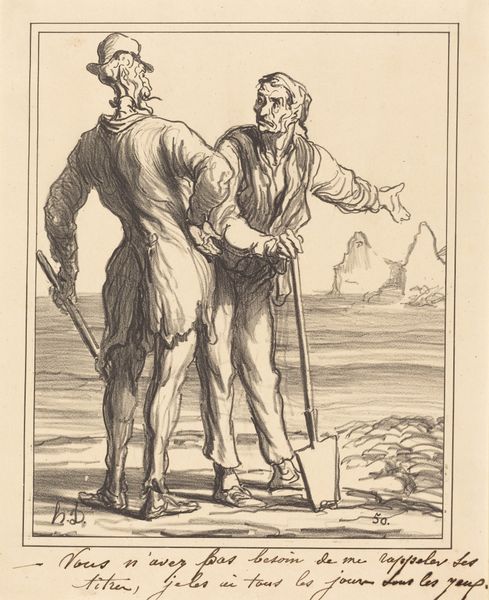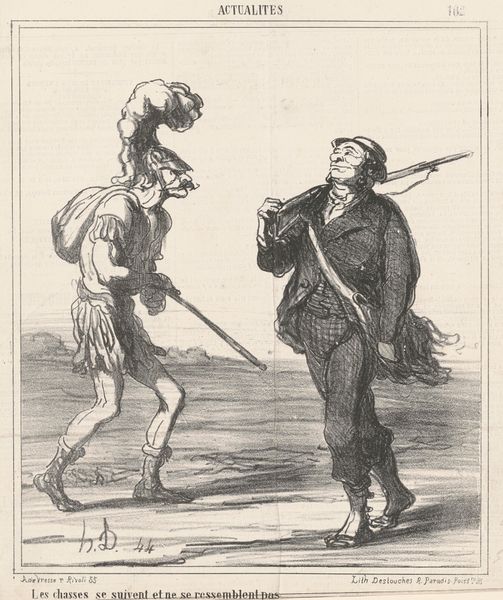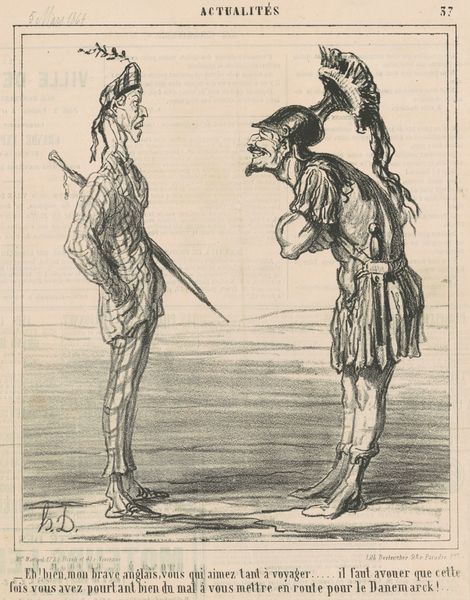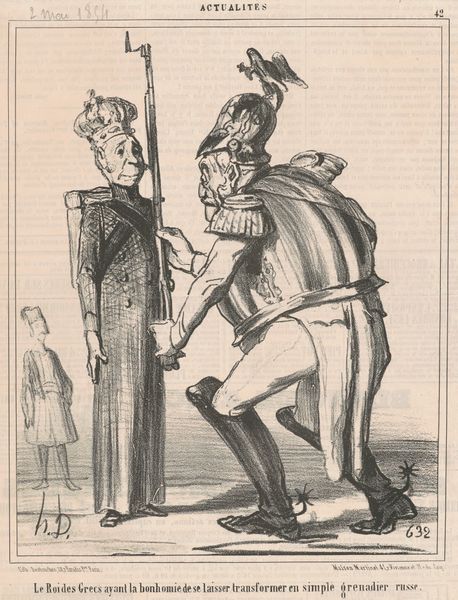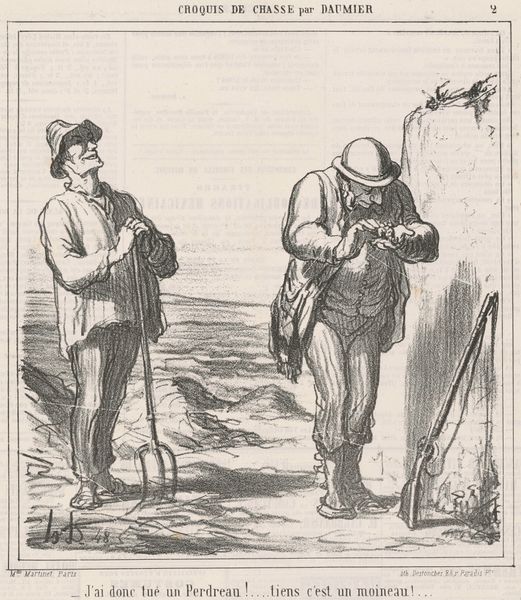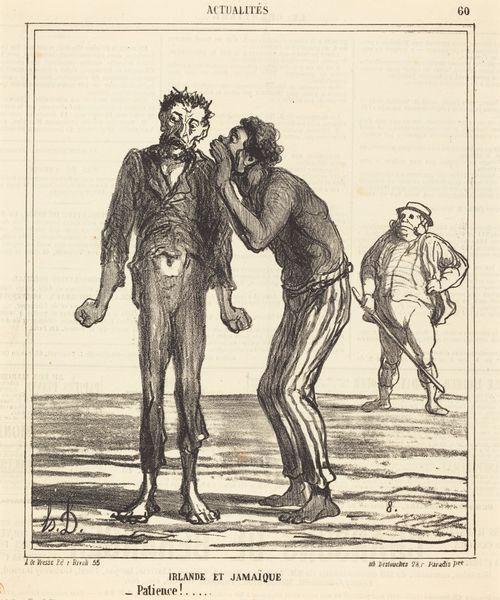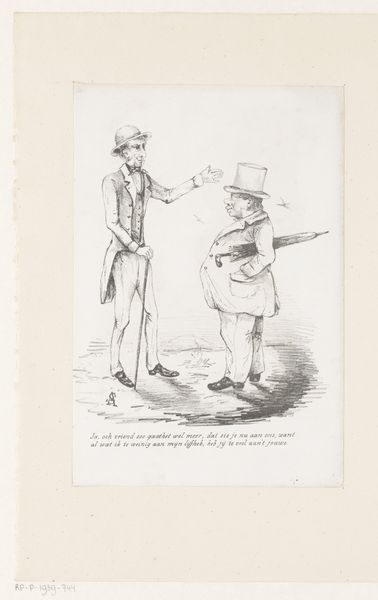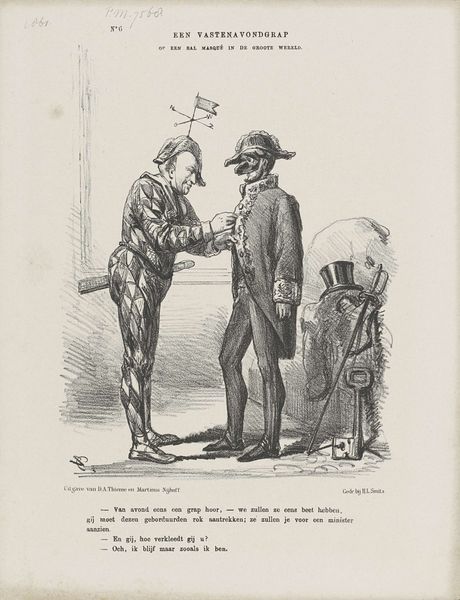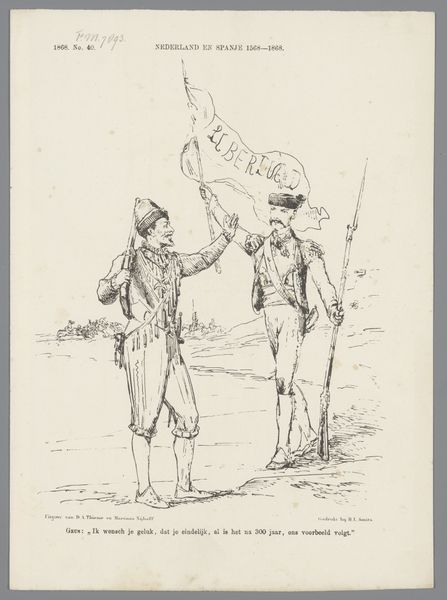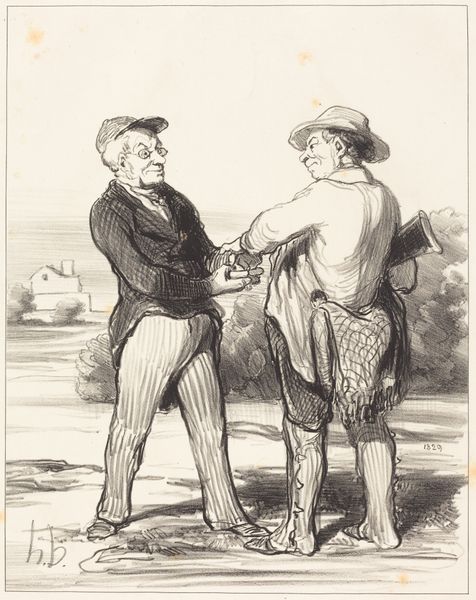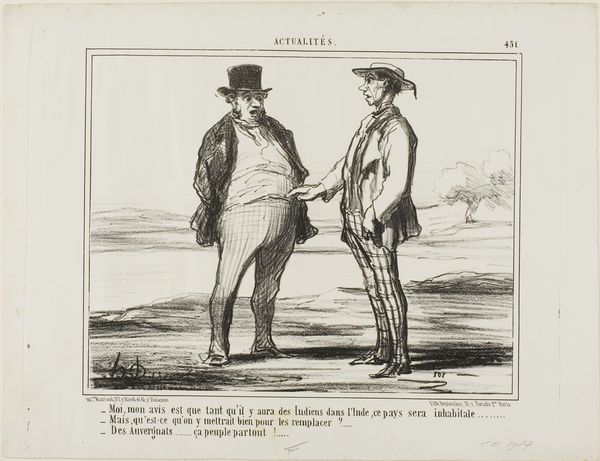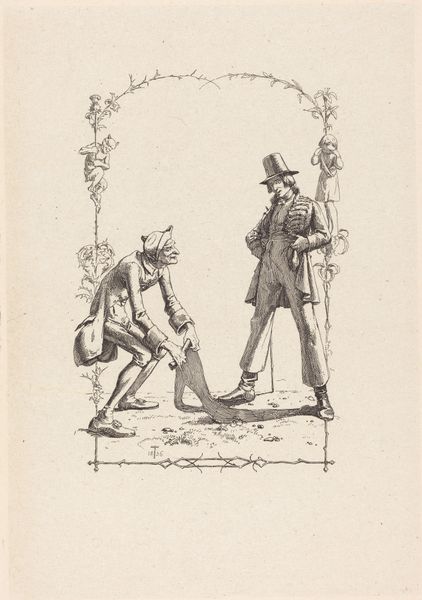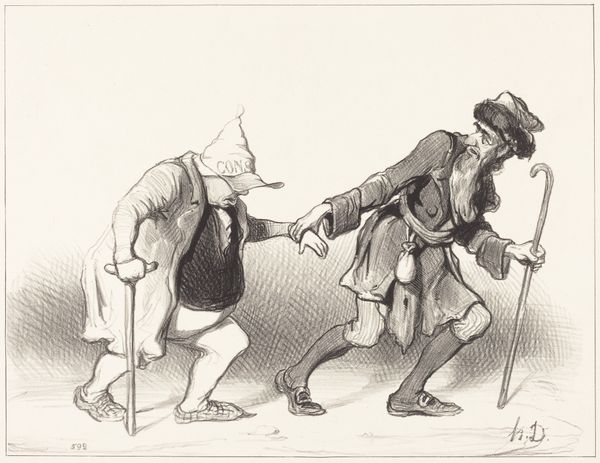
Se demandant si, le duel fini, ils ne vont pas etre plumes 1866
0:00
0:00
drawing, lithograph, print, ink
#
drawing
#
lithograph
# print
#
caricature
#
ink
#
genre-painting
#
history-painting
Copyright: National Gallery of Art: CC0 1.0
Curator: The lithograph before us, "Se demandant si, le duel fini, ils ne vont pas etre plumes" by Honoré Daumier, made in 1866, presents such an interesting perspective. Editor: Indeed! The two figures shaking hands after, I presume, a duel, strike a slightly comical and cynical note. What do you see in this piece that speaks to you? Curator: Consider the materiality and the production of this lithograph. The readily available materials, the relative ease of reproduction. Daumier was not creating rarefied "art" but something meant for mass consumption, appearing in a publication. And note the political and social commentary enabled by print culture: He challenges the traditional power structures through this medium. The artist’s labor, churning out images for the bourgeois press, speaks volumes about the era. Editor: So, you're saying the meaning is tied to how and why it was made? How does the “finished” piece become like… labor materialized? Curator: Precisely. How is it disseminated, and who is consuming it? How are class anxieties addressed or exacerbated in a reproducible print, one of many? What do the caricatured figures, emblems of power perhaps, tell us about artistic intervention during a time of great sociopolitical change and consumption? It has everything to do with the means of production influencing the meaning itself. Editor: I hadn't thought about it that way. Looking at it now, knowing it was for mass production, shifts my perspective. Curator: It's a crucial understanding, particularly with Daumier. It reveals not just the ‘what’ but the ‘how’ and ‘why’ behind art making. Editor: Thanks, seeing it through that lens really changes how I appreciate this piece. I'll definitely be considering material contexts more closely from now on.
Comments
No comments
Be the first to comment and join the conversation on the ultimate creative platform.
